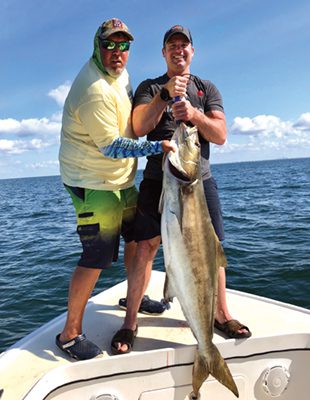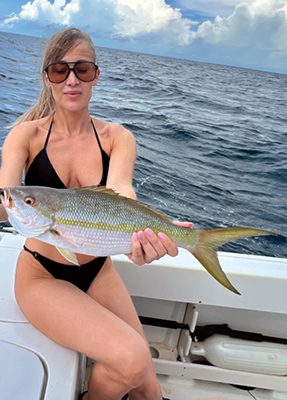
Now that we are getting into the windy cooler months it’s time to start fishing the bridges more and more. Many times, this time of year our charters are scheduled for offshore, deep sea, big game trips, but sometimes Mother Nature has different plans in store for that day. Even though our anglers first choice may be offshore, sometimes it’s not only to rough to fish offshore it’s also too rough to anchor on the reef. In this case we’ll tuck into our bridge spots and pull off a heck of a fishing trip that our clients will never forget. The fish we catch around the bridges this time of year include tarpon, bonefish, yellow jacks, jack crevalle, red grouper, black grouper, gag grouper, permit, african pompano, hog fish, mangrove snapper, lane snapper, yellowtail snapper, school master snapper, cobia, spanish mackerel, cero mackerel, snook, redfish, trout, barracuda, lady fish, sheepshead, many species of shark and a variety of other fish. We target these bridge fish with live bait such as shrimp, pilchards, pinfish, and mini mullet. Live shrimp is by far bait #1.


If you have leftover chum at the end of the day, you can always stick it in your freezer, and it’ll be good for the next trip. When anchoring at a bridge, I used to think it was better to anchor off the bridge and have your chum and hook bait flowing towards the bridge. I found out years ago that in most cases, it’s better to anchor close to the bridge and have your charm and hooked bait flowing away from the bridge. You catch just as many if not more fishing away from the bridge as you do fishing into the bridge and you don’t have as many fish breaking off by getting wrapped around the bridge pylons during the fight. Also, if you’re fishing into the bridge, and your anchor comes loose then your boats flowing towards the bridge, which can be dangerous, especially if you have a boat with a higher tower. Speaking of potentially dangerous situations while bridge fishing, if you see a Danger Falling Debris sign on the bridge, pay attention to it because bridge debris really does fall from the bridge on occasion and even though you don’t hear of it much, one day a big chunk of debris is going to fall off the bridge and take somebody out. Especially around the old 7-mile railroad bridge. Just don’t anchor directly under it.
Sometimes at the 7-mile bridge we like to target large snapper and grouper under the highest bridge span. We like mackerel and jacks near Fred the Tree and most of our tarpon, shark, and barracuda bridge fishing is on the extreme east side of the bridge at the entrance to Marathon near Sunset Grille.
We like targeting bonefish and permit in the shallower water near Pigeon Key section of the bridge, and troll around Vaca Cut Bridge and catch snook and redfish near Duck Key Bridge and Long Key Bridge.
Remember when the weather is rough and you want to stay close to port and fish the bridge the fish run for cover too in rough weather and hang around the bridges for shelter and food.
— For a charter with Captain Joel or Jojo Brandenburg of Ana Banana Fishing
Company in Marathon Florida Keys call cell 813-267-4401 or office
305-395-4212 or visit www.marathonkeyfishingcharters.com
or visit us in person at Ana Banana Marina located at
11699 Overseas Hwy Marathon Florida Keys. Look for the big
yellow Ana Banana sign with antlers around it.
